|
Yearly intake of 137Cs from various dietary components by the ‘selected’ population of Arctic Sweden
|
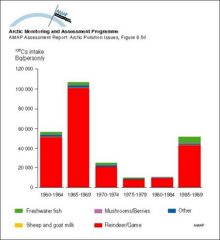
|
|
Annual radiation doses to critical groups from the Loviisa and Olkiluoto NPP’s
|
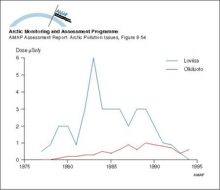
|
|
Collective doses from the Loviisa and Olkiluoto NPP’s
|
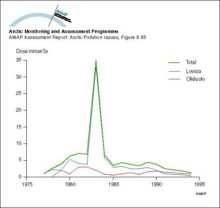
|
|
Discharges of principle beta-gamma emitters in liquid effluent from Sellafield, 1952-1992
|
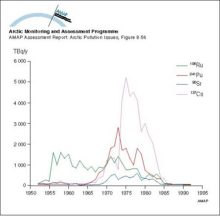
|
|
Discharges of principle alpha emitters in liquid effluent from Sellafield, 1952-1992
|

|
|
Comparison of doses to critical groups for Sellafield discharges from 1952 to 1993
|
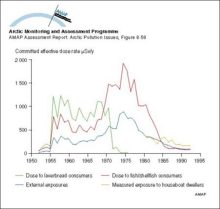
|
|
Collective dose rates from European nuclear fuel reprocessing plants based on releases up to 1986
|
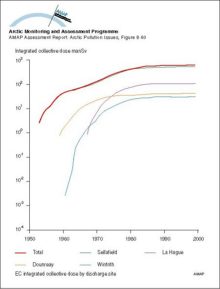
|
|
Collective dose commitment from nuclear fuel reprocessing activities
|
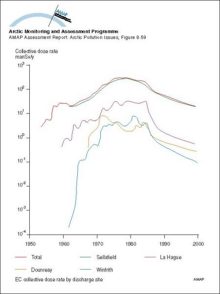
|
|
An example of a positive feedback loop Warming leads to a decrease in sea ice cover which in turn leads to a decrease in albedo over the ocean, the result of which is further warming and further [..]
|
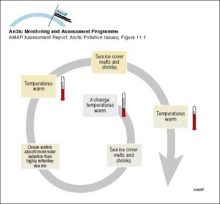
|
|
The hydrologic balance in the Arctic is highly dynamic on the seasonal time scale with large and rapid ice melts in the spring On land, this ice and snow melting results in large rapid floods and [..]
|
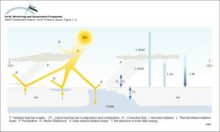
|
|
Locations of upper-air meteorological monitoring stations in the Arctic Meteorological station density for surface observations is greater for inland areas of the Arctic, while observations of any [..]
|

|
|
Seasonal and annual average surface temperature trends (°C per decade) over the northern hemisphere
|
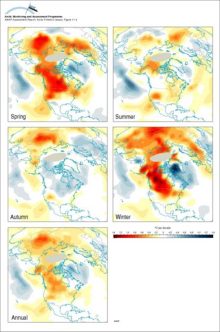
|
|
Lower tropospheric temperatures since 1979, from satellite monitoring High variability is characteristic of the Arctic region due to its isolation from the moderating influences of warm, lower [..]
|
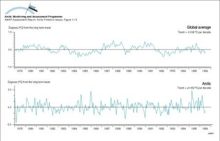
|
|
Lower stratospheric temperature record since 1979
|
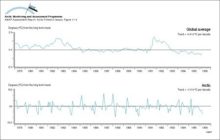
|
|
Lower stratospheric (ca 120-40 hPa) Arctic temperature trends (°C per decade, January 1979 to February 1996), as monitored by MSUs on polar orbiting satellites
|

|
water OR waste searches for either of these words
oceans AND biodiversity searches for blocks with both words
pollution NEAR water searches for blocks with either of these words, with them being closer ranks higher
"climate change" searches for this phrase